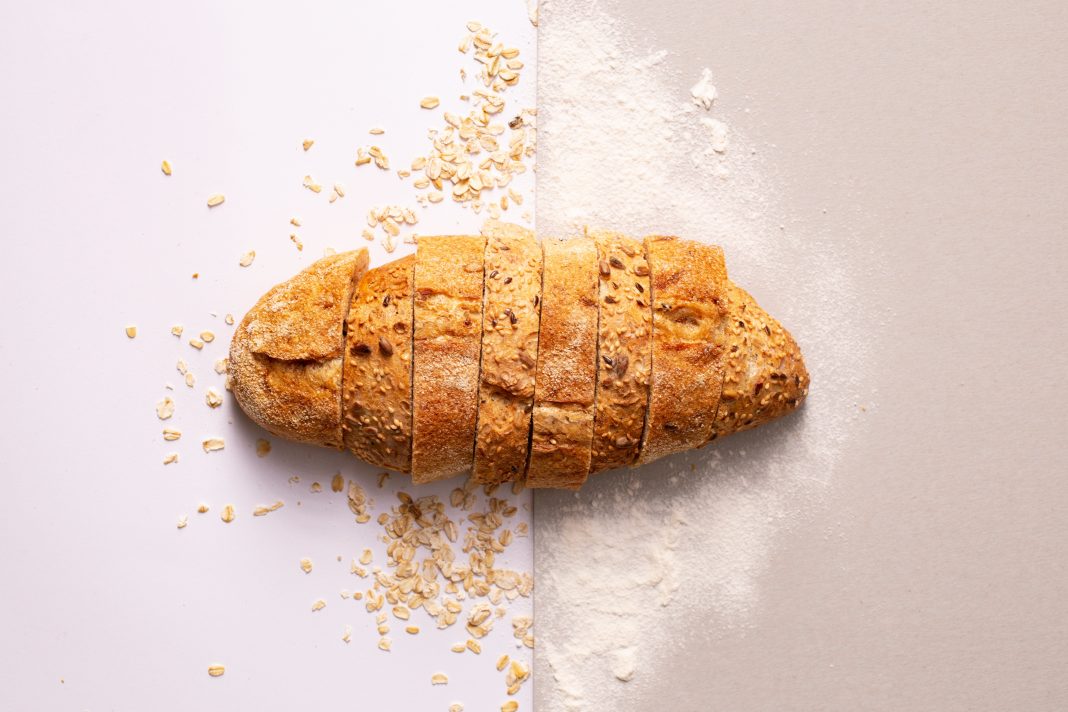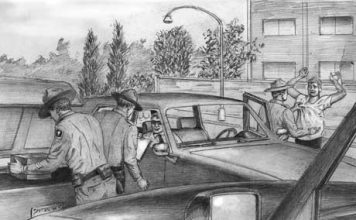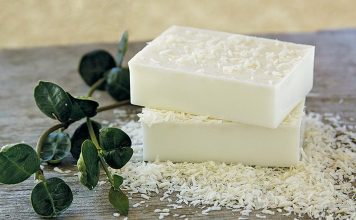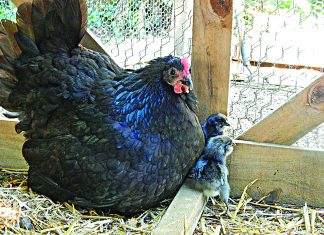By Claire Wolfe |
|
| Issue #113 • September/October, 2008 |
My parents never actually bought Wonder Bread; I got my fix only at friends’ houses. The breads that entered our little three-bedroom, 1½-bath, cookie-cutter tract were brands like Kilpatrick or Oroweat. They were white, but not unearthly white like Wonder Bread. Nor did they have Wonder Bread’s amazing library paste texture. Nor did their packages feature gazillions of bright balloons. Nor did they “build strong bodies 12 ways.”
I felt cheated.
Above all, none of those clearly inferior breads possessed Wonder Bread’s most singular, most spectacular, most notable virtue: being squishable into a tiny ball the size of a grapean object that could be bounced, rolled, or (with crust removed) even used to pick up imprints from the Sunday funny pages.
Yet no matter how hard I lobbied Mom to adopt that clearly superior brand, she was adamant: no Wonder Bread.
Why, I tell you, it was downright child abuse.
But I wasn’t as bad off as Ursula.
Ursula was a shy German girl who entered my class in the middle of the fifth grade. A real German, straight from Germanya country every child who grew up on televised war movies knew was full of badness and suffering. Even her nameUrsula, the she-bearwas bizarre. But the strangest, the most foreign, andin my 10-year-old worldviewthe most pitiable aspect of Ursula was that bizarre bread.
Would you believe it? The poor girl actually had to eat thick, brown, chunky bread baked by her very own mother.
In my sterile, pastel, cardboard-cutout, treeless, conform-or-else world, it was an almost unimaginable thing. Brown-colored bread. With crunchy bits in it. Baked at home.
Oh, the horror.
Richard Blunt’s delicious article in July/August 2008, Issue #112, Whole grain breads baked at home, got me thinking about what a long journey it’s been from Wonder-bland blue-collar suburbia to backwoods life, from Wonder Bread to homemade whole wheat loaves fresh from the oven.
As I looked at Blunt’s photo of chunky, grainy, irregular artisan bread, I didn’t merely light up in anticipation of the taste. I longed to dig my fingers into the warm, elastic dough. I ached to feel the crusty texture and the weight of the baked loaf in my hands. I couldn’t wait to make my very own and raise it to my nostrils for a lovely, long whiff of ancient, eternal breadiness of yeast and sweetness and wheat.
I wanted to make the connection to ancestors 1,000 years past, who probably ate breads much like that one. But I wanted more. And bread, the staff of life, gives so much more than that.
Bread isn’t mere food. It’s a metaphor, symbol, and summation of a larger journey through life and self-ownership. The breads that puff in their plastic wrappers from store shelves tell us where we’ve gone wrong. The good, grainy food that fills our homes with the world’s best aroma remind us of what’s right in lifeand that can be true even when a home-baked batch turns out to be a disaster (as we shall see).
The difference between Wonder Bread and homemade whole-grain isn’t just a difference of taste, texture, and nutrition. It’s a difference in worldview. It’s the difference between doing what you’re told and doing your own thing. It can be the difference between following the herd and cutting your own paththe difference between accepting and questioning Authority.
Making bread at home (like canning, veggie gardening, or hunting) is being involved with what you eat.
On the first level of involvement, when you create your own food, you become intimately aware of exactly what you’re putting into your body. Every ingredient has a name and a known purpose.
One of the first things you notice when making your own bread is how very, very simple it is: flour, salt, yeast, water, sweetener. You can fancy it up with eggs, milk, bananas, nuts, or whatever. But the fanciest bread you ever make, when you really go wild, will probably have not more than a dozen ingredients.
Not so with storebought.
Now, I have never been a “health nut.” If I like a food from the store, I’m not going to worry too much about that complicated list of ingredients they all seem to feature. But just for ducks, a few minutes ago I pulled packages of Costco bagels and Franz deli rye bread out of my freezer and took a look at what’s in them. For the most part, both are made with “real” ingredients. But here are a few other things their labels proclaim: diacetyl tartaric acid esters of mono-diglycerides, ammonium chlorate, and L-cysteine (the bagels); ammonium sulphate, sodium stearoyl lactylate, calcium sulphate, and azodicarbonamide (the rye bread).
Both, of course, also contain the ubiquitous high-fructose corn syrup (HFCS), an ingredient that never passed the lips of our ancestors, which Americans now consume at the rate of about 57 pounds per person per year. This is not the friendly old corn syrup Granny occasionally used, but a highly processed product, invented just a few decades ago and made from genetically modified enzymes.
Now, maybe there’s not a bit of harm in most of that; I don’t know. For instance, the scary-sounding ascorbic acid (another ingredient in the bagels) is just good old vitamin C. And L-cysteine is simply an amino acid. No biggie, eh? But it took less than 30 seconds with Google to start developing a case of the L-cysteine willies, nevertheless. Do you know where these folks get their L-cysteine? According to Wikipedia: “[T]he cheapest source of material from which food-grade L-cysteine may be purified in high yield is by hydrolysis of human hair. Other sources include feathers and pig bristles.The companies producing cysteine by hydrolysis are located mainly in China.”
Yikes. Bite into that bagel and you might just be eating barber-shop sweepings. Or Chinese pigs. Doesn’t sound kosher to me!
Little surprises like that lurk everywhere. You won’t find the following chemical in bread, but check out some yogurts, juices, or candies. Look for a common ingredient variously described as carmine, carminic acid, cochineal, or just the anonymous E120. It’s a red dye, designed to pretty up the color of some things we eat.
It’s also the abdomens and eggs of female beetles, boiled, dried in the open air, then crushed. Bon appetit!
Again, it’s not that pig-bristle amino acids and crushed-beetle food colorings are always bad for us. Maybe yes, maybe no. (In fact, food producers started using carmine, a “natural” dye, because of health fears over the artificial dyes they had been using.) It’s…well, a matter of involvement. If you were choosing what to put into your body or the mouths of your children, would human hair and boiled beetles be your first choices?
I think not.
So when we’re involved in our food, we’re saying, “I choose.” And of course in making fresh, whole-grain bread with fresh, known ingredients, we’re also choosing a growing list of health benefits, including lower risk of heart disease, type II diabetes, high blood pressure, and obesity.
But all that “involvement” takes SO much timewhich is tough if you have to earn a living. And there is one wonderful advantageso it seemsto “uninvolved” food from a factory: it always comes out exactly as it’s engineered to.
When you buy a loaf of Wonder Bread, by golly, it may be crap, but it’s consistent crap. Same with Ragu spaghetti sauce, Campbell’s soup, or Jolly Rancher candies. They taste like what they taste like, every time.
Quite unlike some of our homemade gustatory experiments.
Last night, I opened the lovely Tassajara Bread Book, usually a treasure trove of wholesome and delicious breads. I had been curious for some time about a recipe for Tibetan Barley Bread. It sounded exotically delicious. So I pulled out my Lehman’s Best hand-crank mill, ground a couple of cups of hulled barley into flour, pan roasted the flour with sesame oil, and made it into a warm, fragrant dough with stone ground wheat flour, millet, salt, more oils, and hot water. Oh, it smelled and felt so good. But…I couldn’t quite figure how this bread was going to work, since it contains no rising agents at allno yeast, no baking soda, no baking powderand no sweeteners, either.
Sure enough, it came out absolutely awful. A total catastrophe.
Part of the reason (I suspect) is that the nice folks of the Tassajara monastery forgot to mention that this should have been a flat bread, not a loaf. And I wasn’t savvy enough to figure it out.
But I wasn’t alone. I hit Google to figure out what I had done wrong. One of the first things I discovered was a lament by Jeffrey Steingarten, culinary critic and columnist for Vogue magazine. “The worst loaf of bread I ever baked,” he wrote at the beginning of an article about whole grains, “was the Tibetan Barley Bread in The Tassajara Bread Book from the San Francisco Zen Center. This was the counterculture baking bible of the seventies and it brimmed over with valuable lessons and rewarding breads. Tibetan Barley Bread was an exception, so heavy and dense that it was an accomplishment to slice and unpleasant to eat…” Steingarten adds that the updated 1986 version of Tassajara warns, “Consider this bread a relic from the sixties. Does anybody still eat this way?”
We can hope not. Whatever else it had, the horrible, brick-like, nearly-raw loaf from my oven did have an unmistakable Summer of Love, macrobiotic-diet quality to it.
I trust the neighbors’ chickens enjoyed it.
But even though my latest loaf of bread went to the birds, I still got something wonderful from making it. I got experiencemy first experiences of baking with barley and millet, the fragrant experience of pan roasting barley with sesame oil. Now that was wonderful. All morning long, ever since delivering failed bread to the chickens, I’ve been scheming on how to compose my next batch of barley breadthis time with yeast and honey. I can’t wait to try.
And I learned something about me. Or rather I continued to learn a lifelong lessonthat I can “fail” and not be embarrassed or disgraced. I was reminded once again (and it’s a reminder I sorely need) that failure can be a superb foundation for creativity and success.
Nobody ever learned that from a plastic bag of Wonder Bread.
Being involved with food creation is being involved in all of life. It’s owning not only your own food choices, but taking back a big, important part of life from the institutional forces that dominate modern food production.
I mentioned a ways back that baking bread (and canning, gardening, etc.) could even be a means of challenging Authority.
Before we wind our way to the end of this rather winding path of an article, let’s pay a quick visit to “Authority” and what it’s doing in our food.
Remember that ubiquitous (and increasingly notorious) high fructose corn syrup that’s found in virtually every commercially produced loaf of bread (not to mention soft drinks, sauces, and hundreds of other things we eatincluding bacon and beer)? Know why it’s there? Sure, it’s a sweetener, and it’s there for all the usual sweetening reasons. But the number one reason it’s there is: Authority.
For years, the United States government has kept the price of sugar artificially high via price supports. In the mid-1980s, the world market price of sugar was $.04 per pound. U.S. wholesale buyers were paying $.20 per pound because of price supports and severe quotas on sugar imports. By the mid-1990s U.S. sugar was “only” double the world price, and the federal government continued to subsidize the sugar-growing lobby and maintain strict import quotas. At that time, according to the General Accounting Office, U.S. purchasers were paying more than $1.4 billion extra for sugar and sugar-containing products. Half the country’s sugar refiners had gone out of business in the previous 15 years because of artificially high commodity prices. In 2001, my friend Jim Bovard wrote in a “Future of Freedom Foundation” commentary that the GAO then estimated that the sugar boondoggle cost for consumers had risen to $2 billion per year, and that 17 wealthy sugar growers received fully half the benefit of the entire federal program.
It’s worth going back to the 1980s because that’s when HFCS (which was invented in the late 1950s) made its dramatic crash into practically every processed food in the universe. Why? Not because the world needed yet another sweetener. But because this highly, elaborately, expensively processed “frankenfood” was artificially cheaper than than the sugar these processors were previously using. Thank you, Uncle Sam.
Now, you could argue that loading processed foods with sugar was no great boon to human nutrition in the first place. That’s true. Before the Industrial Revolution, humans consumed, at most, a few pounds of processed sugars per year.
But HFCS is (yet another) substance the human body wasn’t designed for that’s being pumped into our bodies in impressive quantities. Sure, it’s “just fructose and glucose,” neither of which is new to human digestive systems. But because of HFCS’s elevated proportion of fructose, we’re getting our sugars not only in vastly higher quantities, but in a different balance than in all of previous history. High fructose consumption has been linked to a host of health problems thatstrange to sayjust happen to be among those currently hitting us hard. These include obesity, diabetes, bowel disease, decreasing fertility, high cholesterol, heart disease, and more. What’s really scary is that children are some of the biggest consumers of HFCS. The soft drinks they guzzle convey the biggest HFCS injection in the Western diet. Each 20-ounce soda delivers the equivalent of 17 teaspoons of sugar.
Just this week, as I write this, the Centers for Disease control issued a report claiming that 24 million Americans are diabetic. That’s nearly 8% of the country’s population, and a 15 percent increase in just two years. Even if you allow for a certain amount of overhype and changes in the way diabetes is being diagnosed, that’s insane. That’s close to triple the world averageand the world average is also increasing.
No one knows the precise cause of the increase, but we do know that it correlates with adoption of a “Western-style diet.” Because highly refined sugars, and highly refined foods in general, contain little bulk, it’s easy to consume far more calories than we would when eating whole grains, fruits, and vegetables. Furthermore, there’s evidence that fructose actually makes us more hungry. So we consume HFCS, then we crave more foodand of course, the foods we eat load us with even more fructose. And there you have itobesity, sugar highs, and unbalanced processes in the liver, pancreas, and other organs.
And here you thought plain old sugar was bad. That was before “I’m from the government and I’m here to help you.”
Which brings us back to Wonder Bread. Yes, there’s even a link between Authority and Wonder Bread.
To this very day, the notorious library paste of bread presents its own history in this cheery light on its website:
“…Several advances in the nutrition and baking process were made during this decade [the 1940s]. In 1941, Wonder Bread was involved in a government-supported move to enrich white bread with vitamins and minerals to improve nutrition. Known as the “quiet miracle,” bread enrichment nearly eliminated the diseases Beriberi and Pellagra and brought essential nutrients to people who previously could not afford nutritious foods. At the same time Wonder introduced a revolutionary new way of baking that eliminated holes in bread…”
Yes, in patriotic partnership with Uncle Sam, Wonder Bread single-handedly wiped out the scourges of beriberi and pellagra. Wonder Bread’s PR flacks are apparently too modest to mention that artificial enrichment of white bread also helped eliminate nutritional anemia (iron deficiency), and that more recently the addition of folic acid to processed grain products like Wonder Bread helped eliminate some birth defects.
Beriberi is caused by thiamin (vitamin B1) deficiency. Pellagraa truly hideous disease that begins with deformity and diarrhea, progresses to dementia, and ends in deathresults from a deficiency of niacin (vitamin B3). Adding vitamins, iron, and folic acid to processed grain products has indeed saved millions from terrible suffering.
But you’ve already spotted, of course, what else Wonder Bread’s PR people aren’t mentioning. If grain wasn’t processed to death in the first placeits bran layer stripped away, the heat of processing killing much of its remaining nutritional valuethose “12 ways of building strong bodies”those artificial, chemical enrichmentswouldn’t be required. Beriberi, pellagra, iron-deficiency anemia, and those folic-acid-related birth defects wouldn’t have been problems in the first place if people ate a healthy variety of fresh, whole, unprocessed foods.
It is so very like government to spot an artifically induced problem and “solve” it by ordering an artificial “solution”which, at most, acts as a Band-Aid upon the original “wound” of bad nutrition.
But then, saying, “Maybe we should eat whole, minimally processed foods” would just be too simple, wouldn’t it? Can’t build bureaucracies or federal give-away programs around that, can you? And we can’t be without our junk foods and our gunk foods, can we? Not even if it kills us. So we render crap food artificially “healthy.” Yeah.
As just one example of exactly how goofy millions of us have gone for bad food, how foolish we’ve allowed ourselves to become about what we ingest, take a look at Exhibit P for People for the Ethical Treatment of Animals. PETA advocates a pure vegan dietno animal products of any sort. Sticking to a totally vegan diet is hard. It requires not only a huge personal commitment, but an encyclopedic knowlege of the ingredients in everything we eat.
The PETAphiles’ rationale is not necessarily to lead a more healthy life. It’s to avoid “exploiting” our fellow creatures. Yet one would think that the extreme level of food-consciousness required would lead, as night leads to day, to nutritional awareness. But one might be mistaken. A surprising number of vegans (particularly young ones) actually eat appalling junk-food diets. I once met a dewey-eyed vegan who, to keep things simple, consumed very little but French fries. French fries are close to nutrition-free. They produce a quick “sugar high” along with an artery-clogging grease injection and (potentially) constipation that could keep a person on the toilet long enough to read the Lord of the Rings trilogy.
Until recently PETA listed Wonder Breadyes, Wonder Breadas an approved vegan food along with such nutritional delights as Krispy Kreme fruit pies, Jujubees, Smuckers Marshmallow Ice Cream Topping, and Cinnamon Krunchers. PETA seems recently to have removed Wonder Bread from its list of “I Can’t Believe it’s Vegan!” foods. It turns out that, among the unpronounceable ingredients in Wonder Bread, animal products do lurk. But PETA still encourages some of our country’s most food-conscious young people to snack their lives away.
That’s nuts. And I don’t mean the crunchy, high-fiber, high-protein kind.
When we go into our kitchens to begin mixing up simple, basic loaves of homemade bread, we turn our backs on Authority and much that it has wrought. We rejectconsciously or notthe belief that we must trust other people to predetermine what goes into our bodies. It’s a formand an important oneof owning our own lives. “Take your pig bristles and your boiled beetles,” we say, “and shove ’em.”
It’s a long journey from Wonder Bread (or whatever the junk food of our choice) to homemade whole grain foods. In part, it’s a journey back in time. But it’s not an act of foolish nostalgia for “good old days” that never were. It’s also a journey forwardfrom having our diets directed by others for their own convenience to choosing our own better, healthier, more independent lives.
And next time I attempt a version of homemade barley bread, I might even work my way all the way up to mediocre. And from there…who knows?














